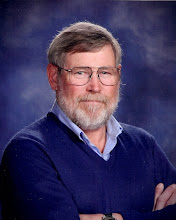Following the scrapping of "Kalakala" by Rhine Demolition, many large pieces were purchased by museums and businesses for display. Smaller pieces were collected and offered to the public for a two day sale on March 13 and 14. I drove down to Parkland early on the 13th. Arriving at 0650 for a 0800 opening, I did not have any problem finding a place to park on the street. Later I found out that when the gate opened, we could park in side the fence near the warehouse. I joined about a dozen people at the gate. Rumors started that the sale would actually start at 0700. Sure enough, at 0715, the gates opened and the rush was on to get into the warehouse and grab something. The local news talked about "hundreds" and "scores" of people, but it did not seem to be that many there. Also, there was not all that many pieces being offered for sale. And some pieces were just too big to easily handle. The workers helped load the bigger items. Most of the "artifacts" was just scrap that had no name or tie to really say that it was part of the "Kalakala". The news said that everything was sold out in an hour and the rest of the sale dates cancelled.
I elected to buy a couple of paperweights cut from brass bar stock riveted to copper pieces. Rhine had them polished, stamped them with an image of "Kalakala" and clear coated them. Overall, it was a fun outing and I suppose I picked up some pieces of history.
This is the ferry Kalakala during one of it's runs from Bremerton. It spent most of it's life on the Bremerton/Seattle run. A lot of Shipyard workers rode this ferry to and from work.
Lots of covers, some ROG's and big bolts. I missed the valve handwheels, they went fast. You could buy a big rusty bolt for $10.
Pistons and rods from the auxiliary engine. About $500.
These railings were really neat and the price was not bad at $300-500.
This was just miscellaneous pieces of steel. One guy did find a piece that had either the "Kalakala" name or the hull number engraved.
This is a main engine piston and connecting rod. I was told that it weighed two tons. It was going for $1500. In the foreground is an engine cover. It was cast with raised text. They only wanted $2500 for it.
Pistons and connecting rods, some with cylinder liners. These were from the auxiliary engine.
This is a crankshaft from probably the auxiliary engine. The main engine crankshaft was 38 feet long and held the record at the time for the longest crankshaft. Comment on the news was that you needed a crane to move it. No kidding!
This is what I bought. They are brass pieces riveted to two copper pieces on the back. The Kalakala image was inked on with a rubber stamp and then clear coated. One of the guys from Rhine Demolition said that it was a splice piece from some trim. With the copper, I wondered if it was from a switch gear. They had a box of these and some smaller paperweights made from brass barstock and half round material. Paperweights are showing up on Ebay already for many times the original price,















